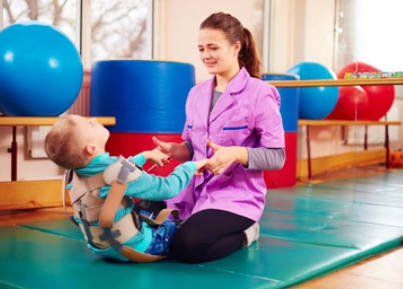What Tools Are Used to Categorize Physical Function in Children with Disabilities?

Understanding and measuring physical function in children with disabilities is essential for developing treatment plans, tracking progress, and setting appropriate goals. Children with developmental disorders, such as cerebral palsy, often experience challenges with motor skills that affect their independence and mobility. To evaluate these challenges effectively, clinicians and researchers rely on standardized tools. One of the most recognized tools is the GMFCS, or Gross Motor Function Classification System. In combination with other assessments, these tools provide a structured way to describe and monitor motor abilities over time.
Why Categorizing Physical Function Is Important
Children with physical disabilities exhibit a wide range of abilities and limitations. Categorizing their physical function helps health professionals understand the degree of impairment and create personalized care strategies. It also allows caregivers, educators, and therapists to speak a common language when discussing a child’s needs. Tools like the GMFCS offer clarity, consistency, and measurable benchmarks that support these efforts.
By using classification systems, medical teams can identify how much assistance a child might need, determine the type of therapy that would be most beneficial, and plan for adaptive equipment. The process of categorization also supports research and policy development by enabling large-scale data analysis and outcome comparisons.
GMFCS: A Primary Tool for Motor Classification
The GMFCS is one of the most widely used tools to classify gross motor function in children with disabilities, especially cerebral palsy. It categorizes children into five levels based on self-initiated movement abilities such as sitting, walking, and mobility. The classification reflects what children can do in daily settings, not just in clinical environments.
Level I represents children with the most functional mobility who can walk without restrictions, while Level V includes children who require total assistance for movement and mobility. The GMFCS is not only used at a single point in time but is applied across five different age bands to capture developmental changes as children grow. These age bands ensure the classification remains relevant and accurate throughout childhood and adolescence.
How the GMFCS Supports Ongoing Assessment
The GMFCS is designed to track changes in motor function over time. This makes it useful for evaluating the effectiveness of therapy, surgical interventions, or mobility aids. Clinicians can monitor whether a child stays within the same classification level, improves, or experiences functional decline. These insights are essential for adjusting treatment plans and setting achievable goals.
In practice, the GMFCS allows parents and professionals to better understand what a child’s motor future might look like. For instance, a child at Level II might be expected to walk in most environments but may have difficulty with balance or endurance. By contrast, a child at Level IV may rely on powered mobility and require significant physical support. Such clarity allows families to plan ahead and seek the right services early.
Other Tools That Complement the GMFCS
While the GMFCS focuses specifically on gross motor skills, other tools provide complementary insights into different aspects of physical function. The Manual Ability Classification System (MACS), for example, assesses hand function in children with cerebral palsy. It classifies how well a child can use their hands to handle objects in daily activities. Similarly, the Communication Function Classification System (CFCS) evaluates how effectively a child can send and receive messages, which is critical for overall independence and participation.
These tools are often used together with the GMFCS to provide a more complete picture of a child’s functional profile. This multi-dimensional approach helps in developing comprehensive, individualized care plans that address motor, manual, and communication needs.
The Role of Functional Assessments in Everyday Care
Tools like the GMFCS do more than just assign labels—they guide real-world decisions. From choosing the right type of physical therapy to selecting mobility aids or classroom supports, these tools influence how children interact with their environments. Clinicians use them to predict future abilities, helping families and educators prepare for transitions, whether that means entering school, starting therapy, or adapting to adolescence.
Longitudinal tracking with tools such as the GMFCS also helps caregivers recognize early signs of progress or regression. This responsiveness ensures that intervention strategies can be modified in real time to meet the child’s evolving needs.
Read more: The Rise of Adaptive Tech
Empowering Families Through Understanding
One of the most valuable aspects of the GMFCS is how it empowers parents and caregivers. It gives them a clearer understanding of their child’s physical abilities, helping them navigate a complex healthcare landscape with greater confidence. By participating in assessments and discussing GMFCS levels with clinicians, families become active partners in care planning.
As parents learn more about their child’s level of function, they can advocate effectively for services, communicate clearly with professionals, and seek resources that match their child’s capabilities. The standardized nature of the GMFCS ensures that everyone involved in the child’s care is aligned in their expectations and approaches.
Conclusion
Accurately categorizing physical function in children with disabilities is fundamental to effective care. The GMFCS is a cornerstone tool in this process, offering a structured and meaningful way to describe motor abilities. Alongside other assessments, it allows for comprehensive planning, targeted interventions, and long-term support tailored to each child’s unique journey. Through tools like the GMFCS, families and professionals can work together to ensure every child receives the care, understanding, and opportunity they deserve.




